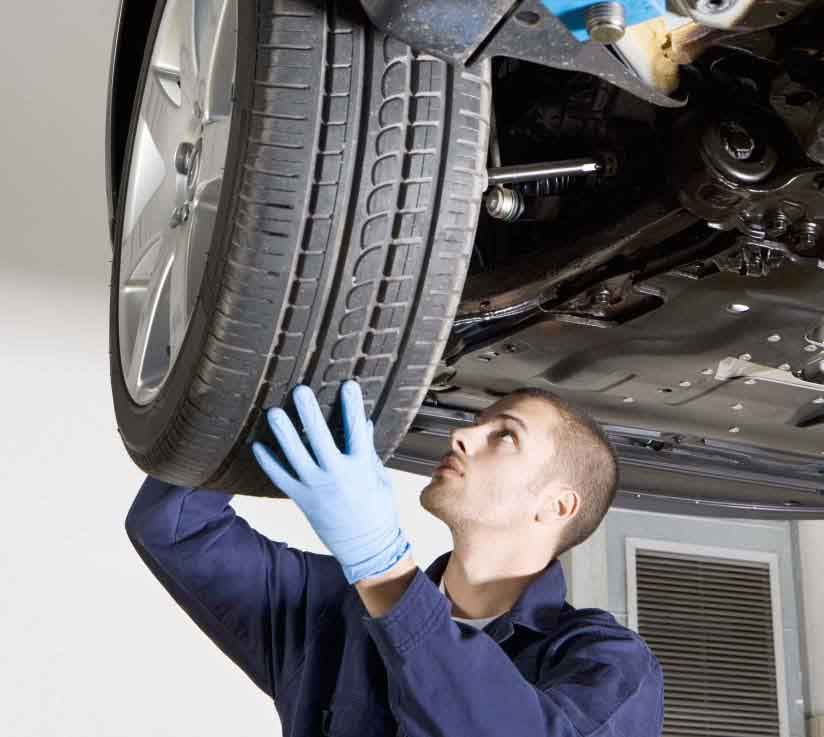26th Aug 2020
Stranded at the side of the road with a flat tyre and no spare wheel? Don’t panic: it can most likely be repaired.
If you have a flat tyre we will help you get moving again as quickly as possible with our simple video instructions on how to repair a tyre:
It's important to note you should never try and change a tyre if your personal safety is at risk. If you aren't confident enough to try to repair the tyre yourself and need assistance, you can call the RAC:
Find a trusted local garage with the RAC stamp of approval.
Book now
Find a safe place to park. It’s better to drive further and risk damaging the wheel rim than stop somewhere dangerous – such as on a narrow road.
Leave your hazard lights on when you park. Put on your reflective jacket if you have one, and position your warning triangle to alert oncoming drivers.
Using a tyre repair kit is very straightforward. Here’s our five-step guide:
Apply the handbrake and remove all passengers from the car. Take the can of sealant and compressor out of the boot.
Examine the tyre carefully to find the puncture, if you have a rip in the tyre sidewall, a hole over 4mm in the tread or the wheel itself is damaged your repair kit is unlikely to work and the tyre will need to be changed.
If you do have a spare, you can find out how to change your tyre here.
If you spot a nail or piece of glass in the tyre, leave it there; removing it may simply make the hole bigger.
Most repair kits will require you to manually squeeze all of the sealant into the tyre, via its adapter. You may have to remove the tyre valve to do so, but instructions in either your repair kit or vehicle handbook will tell you how to do this.
Once all of the sealant is in the tyre, attach the compressor to the tyre valve. Then plug the compressor into the cigarette lighter or 12v socket inside your car.
You may have to roll the car forward slightly to ensure the sealant spreads through the entire tyre.
Some sealant kits, however, will have an additional adapter, allowing you to fit the bottle of sealant into the compressor, so you can pump the sealant into the tyre with the help of the compressor.
Check the car is in neutral, then start the engine and switch on the compressor.
Inflate the tyre to the correct PSI/Bar recommended in your vehicle handbook.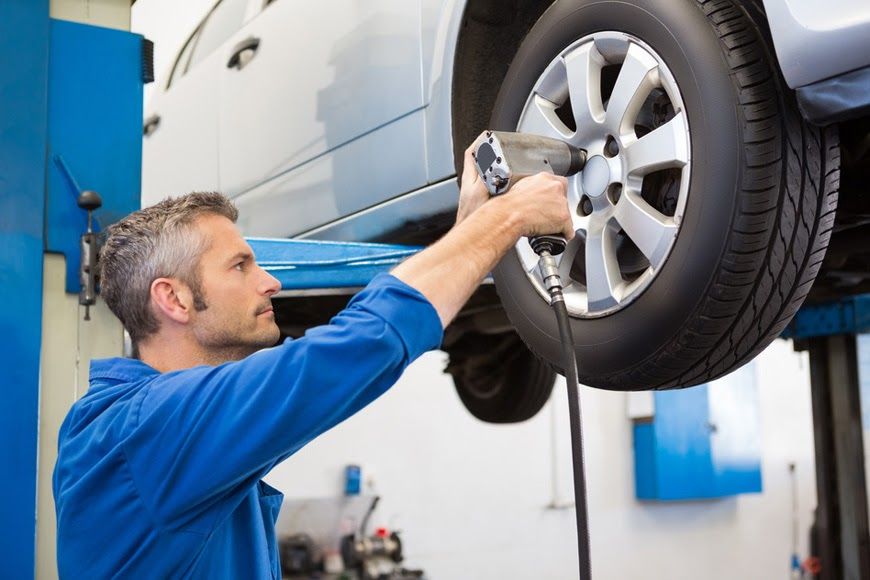
Once the tyre is inflated to the recommended pressure, drive to the nearest garage or tyre fitters.
Do not exceed the maximum speed detailed in the car’s handbook (and usually also on the repair kit itself).
A repair like this is only a temporary measure and you should replace the damaged tyre – and the can of sealant in the repair kit – as soon as possible.
Driving on a repaired tyre for longer than necessary could put you in danger, and in trouble with the police.
According to a recent Which? survey, more than half of new cars come with a tyre repair kit rather than a spare wheel.
The reasons for this include weight, fuel consumption, space and cost, but the upshot is that you’re less likely to get back on the road after a blowout.
That’s because repair kits – which use foam sealant to temporarily plug a hole – aren’t suitable for all types of punctures.
If you have a rip in the tyre sidewall, a hole over 4mm in the tread or the wheel itself is damaged, the kit is unlikely to work.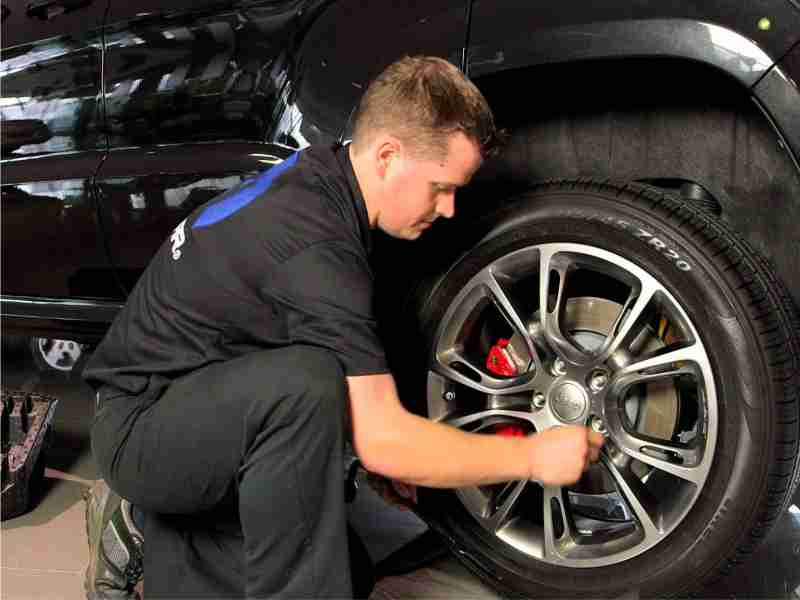
If you don’t have either of the above, help is at hand. Find a safe place to stop, then call the RAC on 03301 598 751.
If your MOT is due or if you would like to book your vehicle in for a full car service, you can book online with your local RAC Approved Garage today.
Can you drive on a flat tyre?
In short, no.
Driving on a flat tyre will lessen your control of the vehicle, cause damage to it and see you hit with three penalty points and a £100 fine for driving a defective car.
The Highway Code states tyres should be inflated to the manufacturer’s specification and if you have a flat tyre you should pull over as soon as it’s safe to do so, to avoid putting yourself and others at risk.
What is a run-flat tyre?
Run-flat tyres have specially reinforced sides which enable you to continue to drive on a puncture, provided you drive at limited speeds and for a limited distance – usually 50 miles maximum.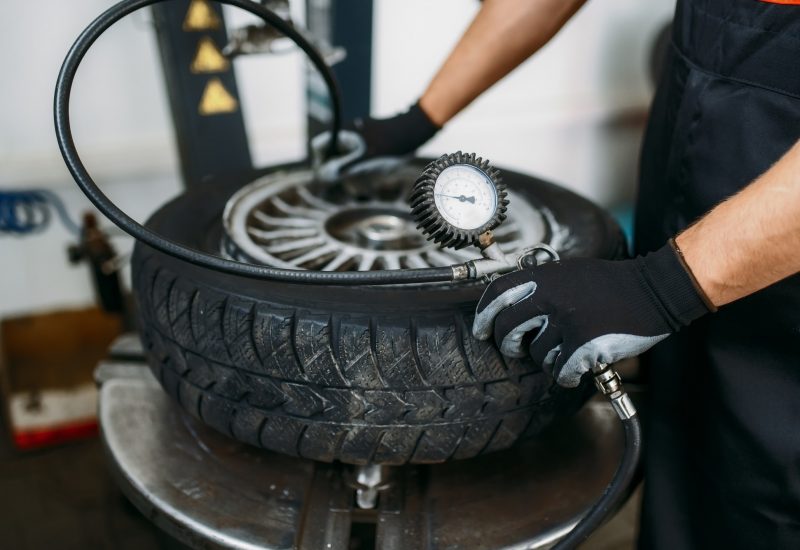
While you’ll be able to continue driving for a limited amount of time on run-flat tyres they can’t be repaired as easily as regular ones, so you’ll eventually need to buy a new tyre should you experience a puncture.
What happens when you drive on a flat tyre?
The first thing that’ll happen is a loss of control over your vehicle, which could put yourself and others at risk. That’s why you should slow down and pull over as soon as it’s safe to do so.
Driving on a flat tyre for long enough could also cause damage to important components of your vehicle – including brake lines, suspension and wheels – which could see you hit with a hefty repair bill.
How do I prevent my car from getting flat tyres?
To help avoid flat tyres, keep a careful eye on your vehicle, checking tyre inflation levels, tyre tread levels and brake pads, as these can all be factors.
You should also avoid driving on roads where you’re more susceptible to picking up a flat tyre.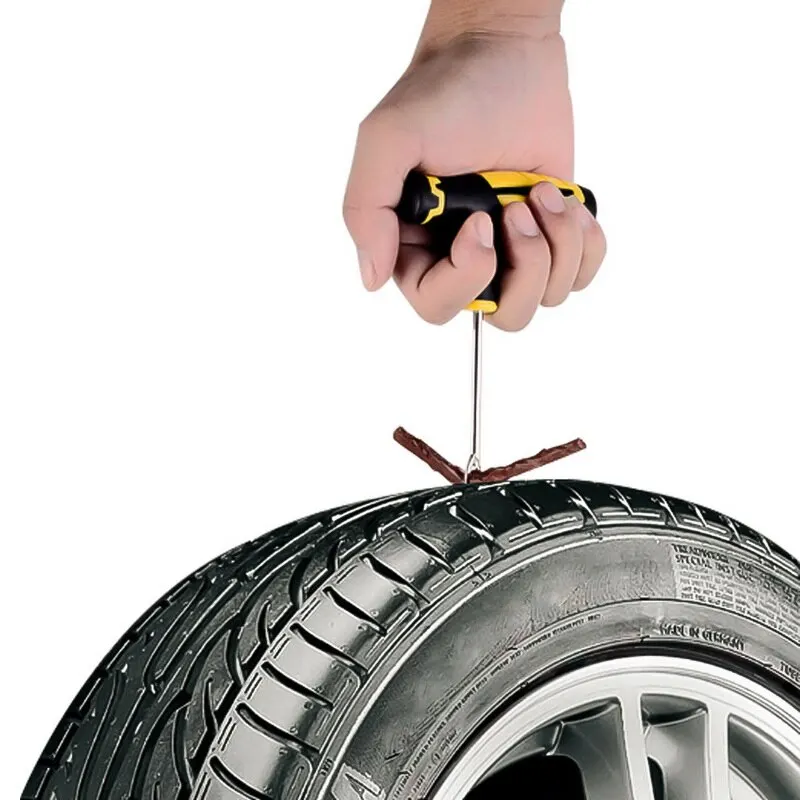 Roads such as those around construction sites where there may be debris like nails and glass shards on the road surfaces, on dirt tracks where there may be hidden rocks jutting out of the ground, or on particularly pothole-ridden roads.
Roads such as those around construction sites where there may be debris like nails and glass shards on the road surfaces, on dirt tracks where there may be hidden rocks jutting out of the ground, or on particularly pothole-ridden roads.
Read our guide on how to report a pothole and claim for damage here.
How can you tell if you have a flat tyre?
If you’re driving and you pick up a flat, the first thing you’ll likely notice is your steering feeling funny for no reason or your car slowing down – both of these should be signs you need to pull over and check your tyres.
A full blow-out will mean you hear a thud and a flapping noise alongside any issues with your steering. Pull over as soon as it’s safe to do so and check around your vehicle.
How many miles can I drive on a flat tyre?
As soon as you think you’ve got a flat tyre you should pull over as soon as it’s safe to do so and check your vehicle for signs of a puncture.
Technically, you may be able continue a little further than this but, not only would this cause significant damage to your vehicle, it puts yourself and other road users at risk as you do not have sufficient control of your vehicle.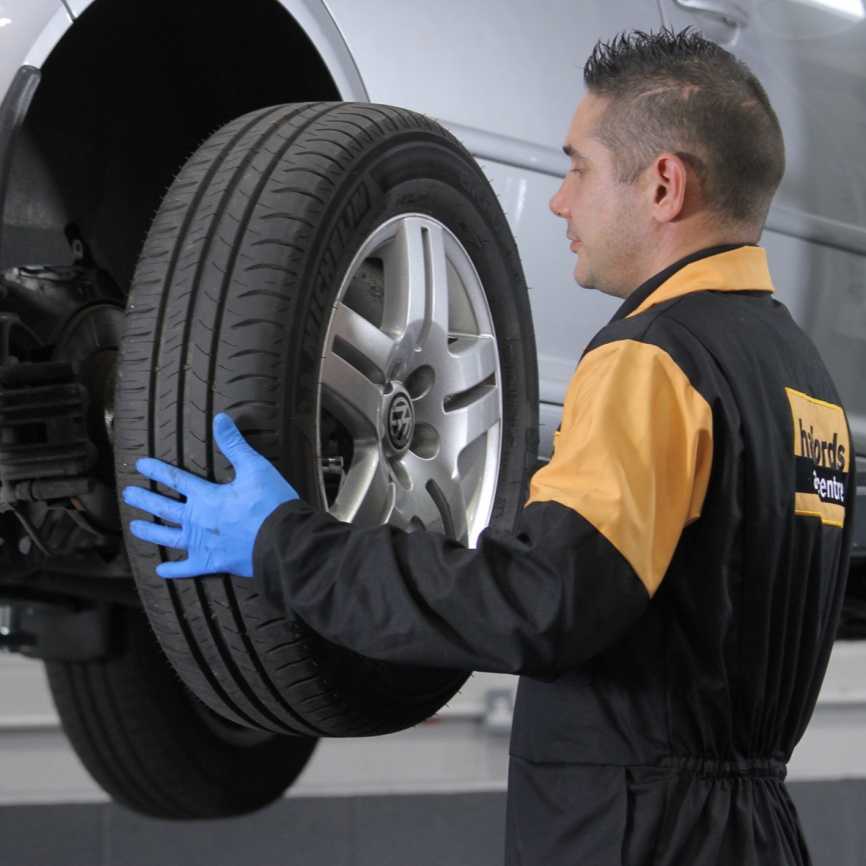
Is it safe to inflate a flat tyre?
Yes, simply follow our video guide above on how to inflate a flat tyre – just remember that you’ll still need to visit a mechanic so that they can replace the damaged tyre.
If your tyre fails to inflate when you’re inflating it, it could be too damaged. If this is the case, use your spare tyre or call RAC breakdown assistance and one of our patrols can help you out.
Can I drive on a flat tyre to get air?
You shouldn’t drive on a flat tyre at all as this can put yourself and other road users at risk and cause permanent damage to your vehicle.
If your tyre has a slow leak and you have means to inflate it (such as sealant and a compressor) then you should be able to inflate your tyre enough to safely transport you to your nearest garage.
Find out where your nearest RAC Approved Garage is.
Why do I have a flat tyre?
There are a number of reasons why you could have a flat tyre, from worn-out or over-pumped tyres to vandalism.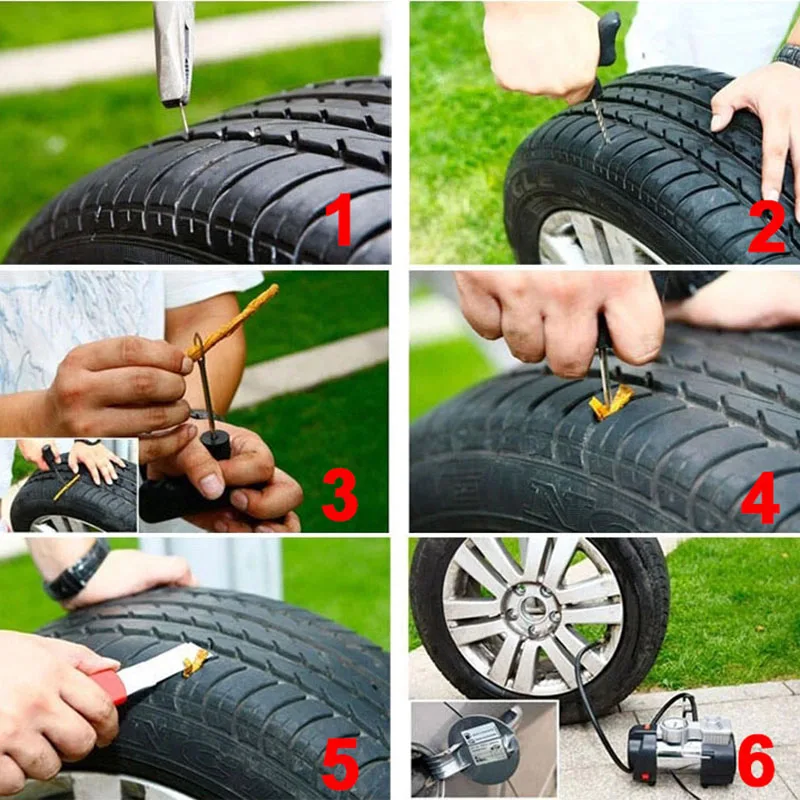 The most likely reason for a flat tyre is a puncture after driving over a sharp object, such as shards of glass or a nail.
The most likely reason for a flat tyre is a puncture after driving over a sharp object, such as shards of glass or a nail.
Why do I keep getting flat tyres on my car?
If you keep getting flat tyres it could be a sign of an underlying problem with your car, such as a faulty valve stem or a damaged mounting surface of your wheel.
Flat tyres could also be caused by your driving habits, for example driving in areas where there is lots of debris on the road (such as near construction sites) or in off-road locations (if your car is not equipped for off-road driving).
Should all tyres have the same pressure?
Not necessarily. Tyres should always be set to the pressures recommended in your owner’s manual, and these may not be all set at the same pressure.
For example, some front-wheel-drive vehicles have higher pressures in their front tyres to ensure better weight and braking bias.
Is it bad to have uneven tyre pressure?
Uneven tyre pressure can lead to uneven traction on the road and uneven tyre wear and tear.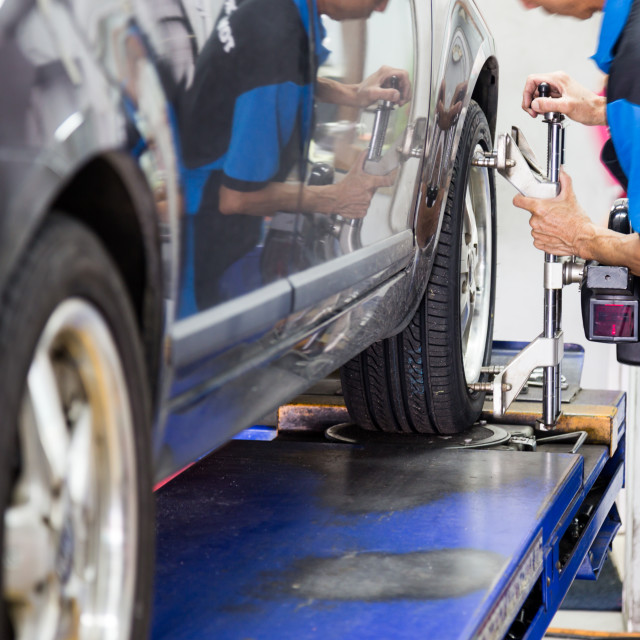 This can cause problems with stability which could lead to problems on the road.
This can cause problems with stability which could lead to problems on the road.
Remember that only tyres on the same axle need to have the same tyre pressure, so you may well find your rear tyres have a different recommended tyre pressure from your front tyres.
Should I fill my tyres to max pressure?
Almost always, no. When it comes to tyre pressure, the maximum is often not the optimum.
Your vehicle will have a recommended pressure range, either in bar or pounds per square inch (PSI). Check your vehicle handbook or the stickers on your bodywork and make sure you use the right pressure for your car.
What happens if there's too much air in my tyres?
Putting too much air into your tyres can be just as bad as not putting enough air into your tyres, as it can cause them to wear unevenly and can even lead to blow-outs if they get too hot.
Ensure you don’t over-inflate your tyres by filling them up to within your vehicle’s recommended pressure range, which should be available in your owner’s manual or on a sticker on your car’s bodywork.
At what PSI will a tyre explode?
There’s no set PSI at which a tyre will definitely explode but generally anything between 150 PSI and 200 PSI could see your tyre blow. Make sure your tyre pressure remains at the safe, recommended level at all times.
How often should I put air in my tyres?
Tyre pressure should be checked every week, with air pumped in if the pressure has fallen outside of the recommended range to help keep you safe.
You should always check your tyre pressure when the tyres are cold — i.e. before you’ve made any journeys that day. This usually means after the vehicle has been parked for three hours or driven less than a mile. This is because warm or hot tyres that have recently been driven on may give inaccurate pressure readings.
Will a flat tyre ruin my wheel?
That largely depends on you. If you pull over as soon as it’s safe to do so when you think you may have a flat tyre, you should be able to limit any lasting damage to your wheel.
However, if you dangerously decide to continue driving you could do lasting damage to your wheel and your vehicle, as well as putting yourselves and other road users at risk.
How much does it cost to fix a flat tyre?
That depends on where the puncture is. If it’s located in the central part of your tyre it may be possible for a mechanic to carry out a safe and lasting minor repair which will obviously be less expensive.
However, if your tyre is punctured on the side it may not be possible for a quick repair to provide a lasting, safe repair which means you may need to pay out for a new tyre.
Find out where your nearest RAC Approved Garage is.
*New, single vehicle based cover. £5.25 a month for Standard cover. Ends 31/10/22, 7am.
A flat tyre can throw your schedule off course, making you late for work and other commitments. But, with a little preparation, you can be ready with the tools to get you back on the road fairly quickly.
Note: You should always check your vehicle handbook for any fault remedy before carrying out any work on your vehicle. If you are unsure of what is required to fix any problems, please consult a professional.
Here we look at the easiest and fastest ways to fix a flat tyre - at least well enough to drive to the nearest garage for a longer-term patch-up.
If you have an air compressor in your boot, you can use this to pump up your tyre temporarily so you can drive safely to a garage.
These are plugged into your car's cigarette lighter, with the hose screwed into the wheel's valve stem. Turn it on and watch the pressure gauge rise to the manufacturer's recommended PSI. This should only take a few minutes.
You may wish to pump the tyre a little over the recommended pressure level, giving you extra air for the ride.
A key benefit of using an air compressor in the event of a punctured tyre, is you don't need to jack the car off the ground.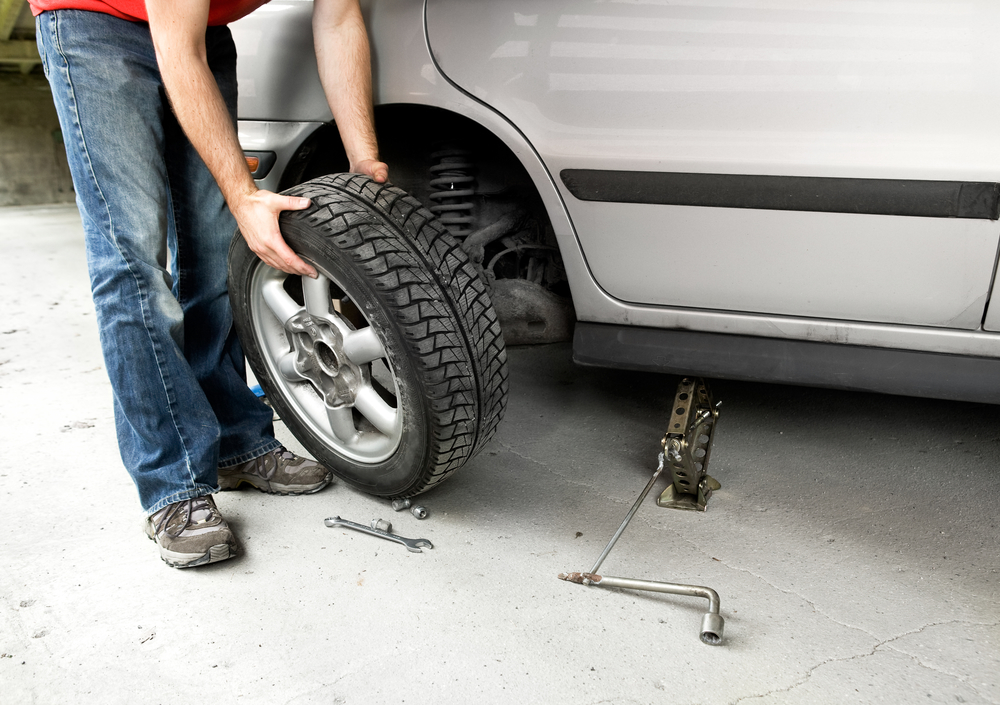
Before setting off, wait a few minutes to make sure the tyre doesn’t deflate quickly, since that would pose a safety risk on the road.
Swapping out the deflated tyre for your spare one is your next option.
You will need a scissor jack, a tyre iron, and a key for any locking lug nuts.
Loosen the lug nuts (so the wheel doesn’t spin) and block off the rear wheels.
Jack up the car and use a jack stand if you have one - for added safety. Remove the lug nuts and take off the wheel. Next, fit the new wheel, making sure the lug nuts are tight.
When searching for the puncture, it's important to wear eye protection in case something flies out of the tyre (eg a nail).
With the damaged wheel off the car, look for the leak by spinning the tyre.
Most tyre punctures are in the tread area.
Any damage to the tyre wall or shoulder means the whole tyre needs to be replaced.
If you can’t find the puncture, spray soapy water on the rubber. Bubbles will come out here the hole is. Also spray the valve stem, where punctures are common.
You can plug the puncture with a rubber plug. These are bought in a set containing rubber plugs, a plug pusher and a reamer (and sometimes rubber cement).
Take a rubber plug and thread it into the plug pusher, with an equal length of rubber on each side of the pushing tool. Next, use the reamer to widen the puncture, then use the pusher tool to insert the rubber plug into the tyre.
Many punctures are caused by nails and screws; remove this object from the tyre, then use the reamer to smooth the hole. If you have it, add rubber cement to the plug. This is not essential, but it will lubricate the plug as it's inserted, and will harden later to make the repair more sound.
Force the plug into the hole with the pusher tool; this may take some effort. Don’t force the plug all the way in; leave a quarter poking out of the hole. Pull the plug out quickly, and the rubber will stay in the hole (the end of the plug tool breaks to allow this).
Don’t force the plug all the way in; leave a quarter poking out of the hole. Pull the plug out quickly, and the rubber will stay in the hole (the end of the plug tool breaks to allow this).
Wait 10 minutes and then cut off the excess rubber on the plug.
Pump up the tyres to the right pressure, then re-fit the tyre, making sure to fully tighten the lug nuts.
Note: Plugged tyres are not a permanent solution. Your tyre shop/garage will be able to make a permanent repair.
You can buy a can of compressed air with sealer. This can be pumped into your punctured tyre to inflate it.
The sealer liquid in the can should plug any small leaks and help you get back on the road. However, the sealer damages the tyre material, so it’s only a temporary measure.
It also means the tyre will need to be replaced, and therefore should only be used in emergencies..
If you do suffer from a puncture to your tyre, your breakdown cover provider should be able to assist you.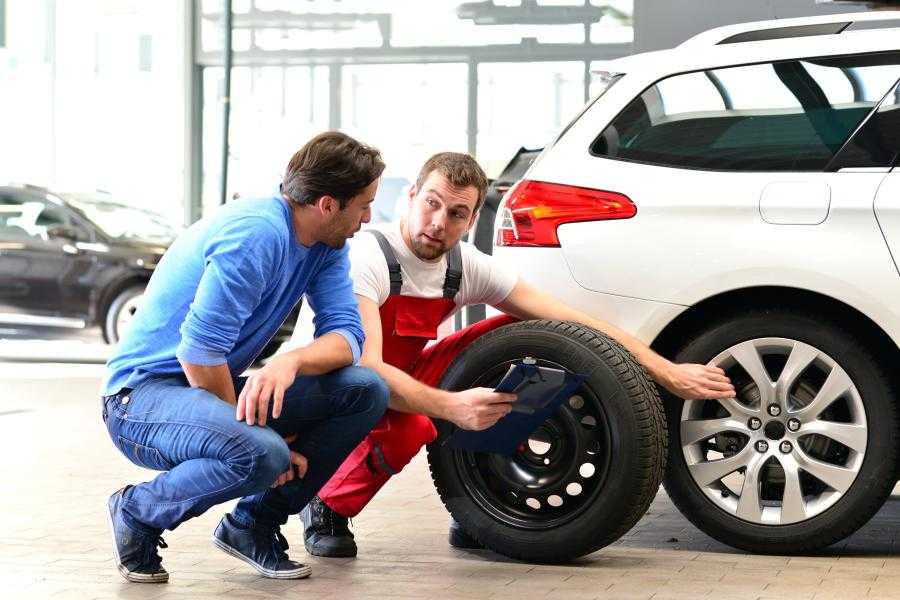
Join Start Rescue, for peace of mind of assistance when you are on the road, with the benefit of unlimited call outs* included as standard with all our breakdown cover policies.
Buy breakdown cover
*If you have the same reoccurring issue with your vehicle, you must have this checked, see policy terms and conditions.
www.adv.rbc.ru
www.adv.rbc.ru
www.adv.rbc.ru
Autonews
TV channel
Newspaper
Pro
Investments
+
New economy
Trends
Real estate
Sport
Style
National projects
City
Crypto
Debating club
Research
Credit ratings
Franchises
Conferences
Special projects St. Petersburg
Petersburg
Conferences St. Petersburg
Special projects
Checking counterparties
Library
Podcasts
ESG index
Politics
Economy
Business
Technology and media
Finance
RBC CompanyRBC Life
www.adv.rbc.ru
Photo: Mikhail Tereshchenko / TASS
www.adv.rbc.ru
See also
Nail, rebar or sharp stone - sometimes you can damage a tire almost from scratch. First of all, the scale of damage is important, and often rubber can still be repaired. Most often, motorists turn to tire shops for repairs in the middle of autumn or spring - just in the season of replacing summer tires with winter tires and vice versa. In order not to stand in lines, it is worth knowing exactly when to go to the tire shop and when to go to the store.
Most often, motorists turn to tire shops for repairs in the middle of autumn or spring - just in the season of replacing summer tires with winter tires and vice versa. In order not to stand in lines, it is worth knowing exactly when to go to the tire shop and when to go to the store.
The most common "injury" to rubber is a puncture, and it can most often be repaired. Professionals in the nearest service will do it much faster, and your hands will remain clean. But if the puncture caught you in a deserted place, and there is a pump and a tire repair kit with harnesses in the trunk, you can patch up the tire yourself. Most often, when repairing the front tires, the wheel can not even be removed, it is enough to turn the steering wheel in the right direction and find the puncture site.
First, the hole is cleaned with a helical awl, the repair harness is smeared with glue and tucked into the eye of the awl, after which it is inserted into the tire hole. With a sharp movement, the tool is removed, and the tourniquet remains inside and securely clogs the hole.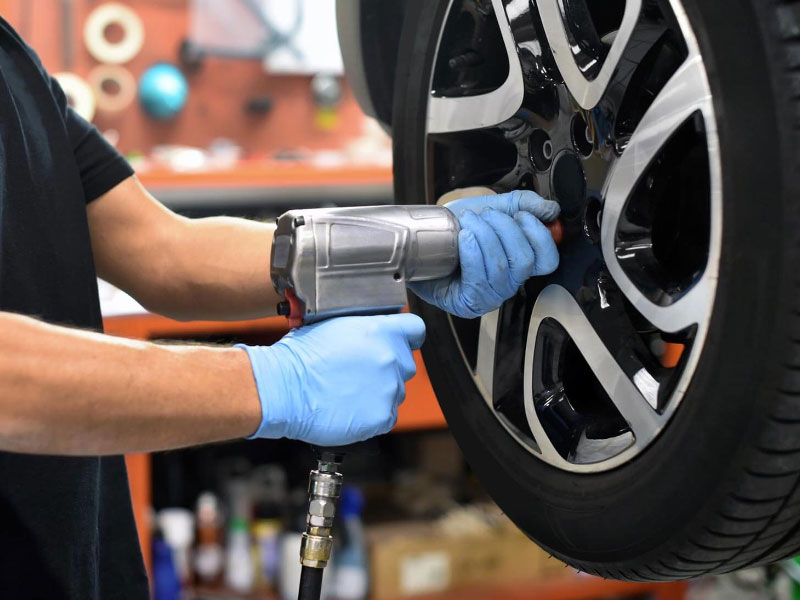 The tails are cut with a knife, but it is recommended to leave about 20 mm. After that, the tire can be inflated and the pressure checked.
The tails are cut with a knife, but it is recommended to leave about 20 mm. After that, the tire can be inflated and the pressure checked.
Repair with tourniquets is not considered long-term, because after some time they dry out and begin to let air through. A more advanced puncture repair method is vulcanization. The hole is sealed with an elastic patch, and the funnel at the puncture site is filled with a special compound. A vulcanizer is put on top, which heats the patch and solders the excess.
Under service conditions, the puncture is also repaired with cord fungus. The puncture site is processed and drilled to roughen. Everything is smeared with glue, after which a fungus is introduced from the inside of the tire, its cap is rolled, and the excess legs are cut off from the outside.
Photo: PA Images / TASS
A puncture can also be repaired with sealant. Many car manufacturers with run flat tubeless tires put compressor repair kits in the car instead of a spare tire - a bottle of pressurized sealant.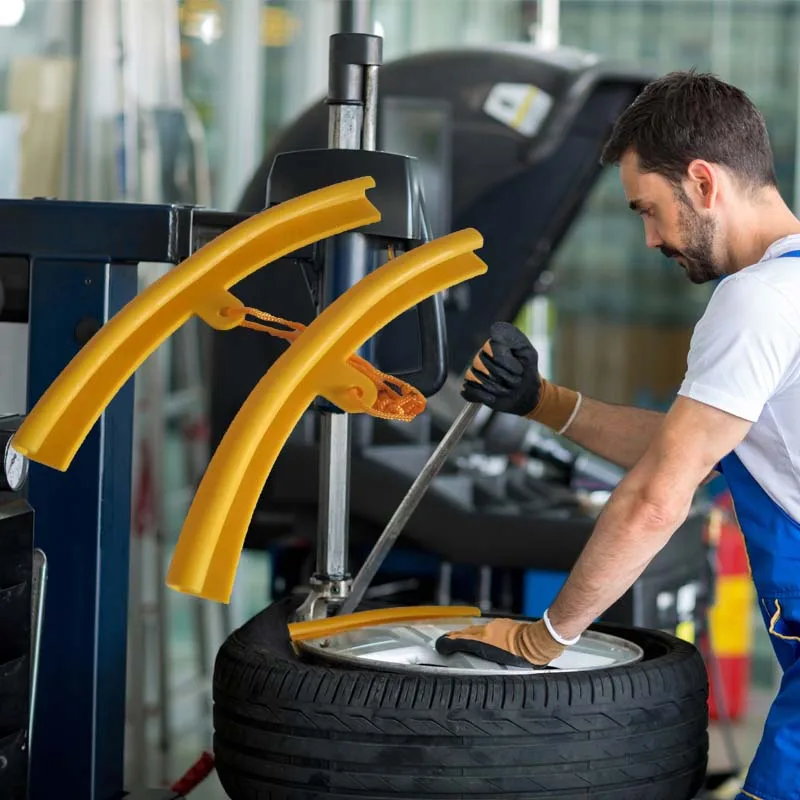 The car is raised on a jack, after which the sealant is pumped into the damaged wheel through the nipple. Next, you need to spin the wheel and pump it up. After repair, the car should be driven a couple of hundred meters to check the tightness of the tire. If it has not recovered, the procedure is repeated.
The car is raised on a jack, after which the sealant is pumped into the damaged wheel through the nipple. Next, you need to spin the wheel and pump it up. After repair, the car should be driven a couple of hundred meters to check the tightness of the tire. If it has not recovered, the procedure is repeated.
It happens that a self-tapping screw or a nail closes the hole in the tire, remaining inside. Do not rush to pull it out - until the pressure drops, you can safely get to the service for vulcanization. Sometimes the wheel begins to blow off a few weeks after the self-tapping screw got into it. Therefore, it is better to check tire pressure periodically, and if the pressure sensor lights up, you should at least visually inspect the tire for a nail head.
A bump or bulge most often occurs on the side of a tire after hitting an obstacle or hitting a hole at speed. From the impact, the sidewall carcass threads are damaged, the tire ceases to hold the load and pressure, swelling appears.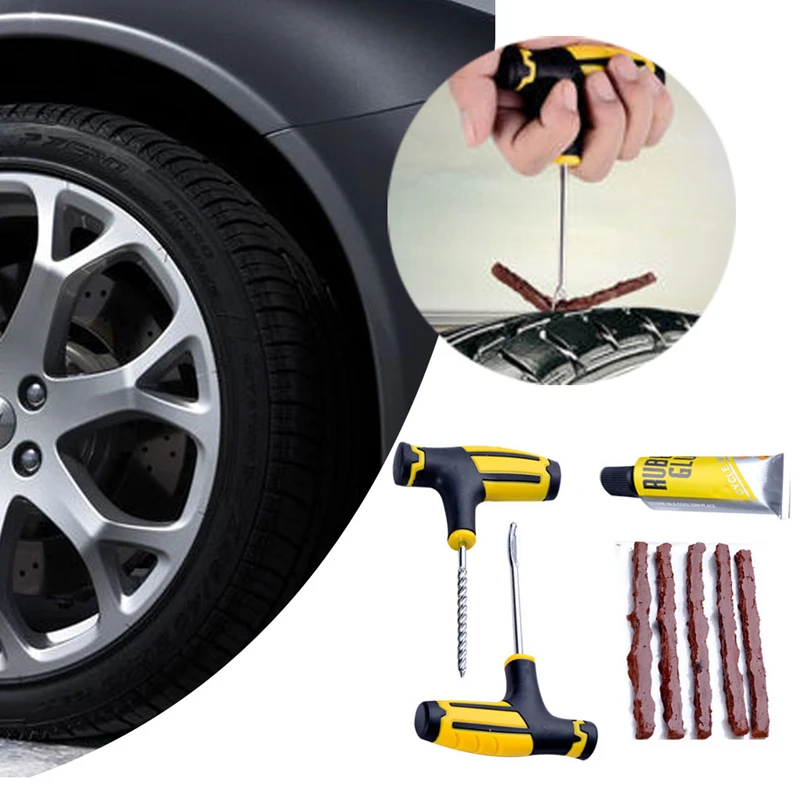 Any small bump eventually turns into a larger one, and with such a defect, the wheel can burst at any time. This is a direct safety hazard because a sudden flat tire can cause loss of control and a road accident.
Any small bump eventually turns into a larger one, and with such a defect, the wheel can burst at any time. This is a direct safety hazard because a sudden flat tire can cause loss of control and a road accident.
Some bulges can be repaired, but no patch will ever restore a tire to factory stiffness. The ideal option in this case is to replace the tire. If a hernia has appeared on the tread, then you can extend the life of the tire with the help of cord patches - ready-to-use patches with an adhesive layer. But if swelling is found on the sidewall, the likelihood of repair is minimal, the wheel is easier to change. Blisters on low profile tires are generally not repairable.
Only car service professionals can repair a side cut. Cord patches will be needed to repair the damage, but after some time the wheel will still have to be changed. This method will work only if the gap is not in the shoulder area of the tire, then no one will repair it.
In general, cuts or punctures, unlike punctures, are considered non-repairable, since the integrity of the frame is violated.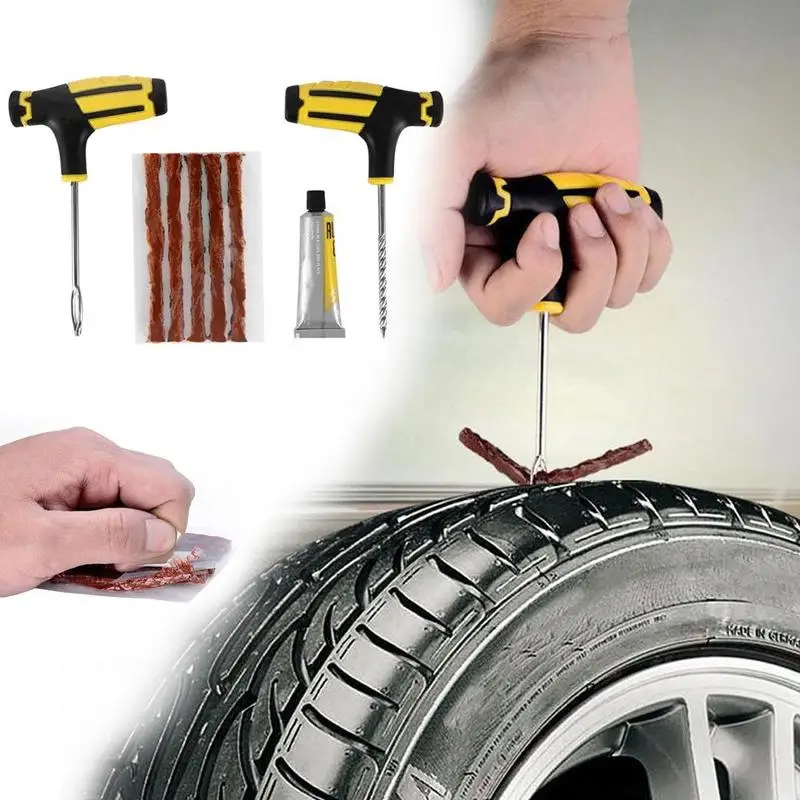 And breakdowns do occur on the go, when the tire abruptly loses pressure and has time to make only a few turns “on the rims” before it comes to a complete stop. In this situation, the cord breaks and the layers of the tire are destroyed. Even if it is possible to close the hole, it is not recommended to use such a weakened tire.
And breakdowns do occur on the go, when the tire abruptly loses pressure and has time to make only a few turns “on the rims” before it comes to a complete stop. In this situation, the cord breaks and the layers of the tire are destroyed. Even if it is possible to close the hole, it is not recommended to use such a weakened tire.
Photo: Mikhail Pletsky / Russian Look
Cracks, sidewall abrasions and unprofessional tire fitting can also lead to tire problems. Cracks can occur as a result of improper storage of tires. Their danger is that moisture begins to flow to the cord, and this already renders the frame unusable. Air can also escape through cracks. Cracks cannot be repaired and tires will not last long. A tire with cracks is deformed, blistered, and may even break while driving.
Rubbing against curbs or driving on uneven roadsides can damage the tire sidewall. When driving like this, it is worth inspecting the tires for damage regularly. If a slight wear is found, the wheels can be swapped, which will slightly extend their service life and allow you to delay the purchase of new ones.
Improper fitting can damage the tire bead. In this case, the tire will lose its geometry and sit on a disc with a bevel, “eights” will be visible during rotation, and the driver will feel vibration while driving. It is impossible to repair this defect, the wheel must be changed as soon as possible, otherwise there is a risk of damage to the suspension.
How to Tires
www.adv.rbc.ru
www.adv.rbc.ru
Another season of changing shoes is approaching. And you may remember that on one of the tires after the last winter/summer there is a jamb - a small bump. I don’t want to run to the store for the sake of one new tire. We understand. Or maybe it looks even better if repaired?
We understand. Or maybe it looks even better if repaired?
Yes, not every wheel that encounters a nail, rebar sticking out of the ground or a sharp stone off-road is considered damaged. Everything, of course, depends on the scale of the damage and its location on the tire itself. Some are easily repaired, while others are simply impossible to do - the tire can only be sent to the trash.
A bulge on a wheel, referred to by drivers as a bump or bulge, is the most common tire sidewall defect. It appears due to a collision with an obstacle or after falling into a pit, more often at high speed. The threads of the sidewall carcass are easily damaged by impact, and the tire at this point can no longer hold the load and air pressure - swelling appears. A small bump sooner or later turns into a big one, and driving with such a defect is dangerous - the wheel can shoot at any moment. At high speed, this is fraught with loss of control, departure from the road and a rollover.
The quality of roads in Kazakhstan contributes to the appearance of bulges on tires
Some types of bulges are repairable, although this is a temporary measure. Not a single patch can restore the factory rigidity. Ideally, change the tire.
Special cord patches can extend the life of a tire with a herniation, even if the swelling has appeared on the tread. The sidewall is a different story. If the swelling appeared at a distance of more than 40 mm from the side, it can be repaired. If not, then the wheel needs to be replaced. Blisters on low profile tires are most often non-repairable.
For maximum safety when riding with a repaired bump, insert the tube. This is an inexpensive and reliable solution. On our market, you can find cameras made in China and Russia, the latter are slightly more expensive, but also of better quality.
The elimination of a side cut is a serious operation, therefore, as in the case of a bump, you will have to go to the professionals. We need cord patches, fortunately in our time they are of different sizes and with a different number of layers. And if you do it wisely, then you can't do without special tools and vulcanization.
We need cord patches, fortunately in our time they are of different sizes and with a different number of layers. And if you do it wisely, then you can't do without special tools and vulcanization.
A cut, by the way, cannot be healed in all cases. If the gap is in the shoulder area of the tire, it is unlikely that anyone will undertake to repair it, since no guarantees can be given here. However, our Kulibins take on even the most difficult cases, cutting out parts of the sidewalls from the tires and even weaving the cord on their own.
Tire overhaul. We would not put such a wheel on ourselves
Low profile tires can be repaired, but more difficult. A tear in the sidewall is easier to seal on tires with a medium or high profile.
Sometimes a cut is confused with a pluck. This is when the outer layer of the sidewall caught on something sharp, a tear formed, but the frame itself remained intact. There is nothing wrong with that, although the drivers at the tire fitting company successfully repair the cut, for which they take it accordingly.
If a piece of rubber remains on the sidewall, then glue it with ordinary superglue (101st). If it came off, then it is better to cover it with raw rubber and vulcanize. Leaving the pluck bare is not recommended, because the tire carcass, often consisting of a metal cord, will quickly corrode.
In Europe, defective or used tires are perforated before being sent for scrap to prevent their resale and possible operation. But they don’t know that we have such holes on the sidewall patched once or twice
Cuts and hernias are not the only possible damage to the side of the tire. You can also spoil the side ring, in the process of changing shoes, for example. If it’s for garlic, then such a tire is already dangerous. Sooner or later, the tire pressure and the load in motion will start to squeeze the rubber off the rim - a wheel explosion can occur.
This ailment is repaired if the wire ring - the base - is intact. There are no special technologies and materials to correct this particular problem, but most often craftsmen use a two-component composition for chemical (also called cold) vulcanization. After mixing, the mass is pressed into a fat-free damage. Compound manufacturers recommend waiting 72 hours before mounting a tire. Of course, our masters do not pay attention to this condition - they put the tire right away. And it’s good if the wheel is flat because of this at night in the parking lot, and not on the road.
There are no special technologies and materials to correct this particular problem, but most often craftsmen use a two-component composition for chemical (also called cold) vulcanization. After mixing, the mass is pressed into a fat-free damage. Compound manufacturers recommend waiting 72 hours before mounting a tire. Of course, our masters do not pay attention to this condition - they put the tire right away. And it’s good if the wheel is flat because of this at night in the parking lot, and not on the road.
If the side ring tears are barely noticeable, but the wheel still deflates, then you can use a special liquid - a bead seal designed to seal a tubeless tire.
These seals have been used in motorsport for some time. In particular, in the American Formula D Drift Series, drivers used compounds to keep the tire on the rim even with minimal tire pressure. Now they are banned.
Pay attention to the left rear wheel of the Nissan Silvia S13. Due to too low pressure, it was literally taken off the disk under load
Every schoolboy has faced this problem when patching his bike tube after hitting something sharp. Repairing a car tire puncture with your own hands will also not be difficult even on the road. But for this you will need a pump (or compressor) and a universal tire repair kit with harnesses. All this is sold at any car market or gas station.
Repairing a car tire puncture with your own hands will also not be difficult even on the road. But for this you will need a pump (or compressor) and a universal tire repair kit with harnesses. All this is sold at any car market or gas station.
Repairing a tire on the side of the road with harnesses
The process is simple. If we are talking about the front wheels, then in most cases the wheel can not even be removed, it is enough to turn the steering wheel in the right direction, find the puncture site and carry out repairs. First, the hole is cleaned with a helical awl from the set. The tourniquet itself is smeared with glue and tucked into the eye of the awl, after which it is inserted into the tire hole. With a sharp movement, the tool is removed, and the tourniquet remains in place and clogs the hole. The tails are cut with a knife, but not at the root, it is recommended to leave about 20 mm. The tire is inflated and checked.
Sometimes a nail or self-tapping screw clogs the hole by itself, remaining in it. If you see a hat in a tread, do not rush to pull it out. While the pressure is holding, move to vulcanize. And sometimes they drive with a screw in a tire for weeks.
If you see a hat in a tread, do not rush to pull it out. While the pressure is holding, move to vulcanize. And sometimes they drive with a screw in a tire for weeks.
Repair of a puncture at a tire shop
Punctures are also repaired with harnesses at a specialized service, although among professionals such repairs are not considered long-term. After a few months, the flagella dry out and can let air through. There are more advanced methods like cold and hot vulcanization. The latter is more reliable. In this case, the hole is sealed with an elastic patch, and the funnel from a foreign object is filled with a special compound. After that, a vulcanizer is put on the tire, it heats up the rubber and solders it.
In addition to the plaster, the puncture is also repaired with special cord fungi. Craftsmen process the puncture site: drill it and treat the surface with a tool to roughen it. Then the repair area is lubricated with glue (it is also called cement) and a fungus is introduced.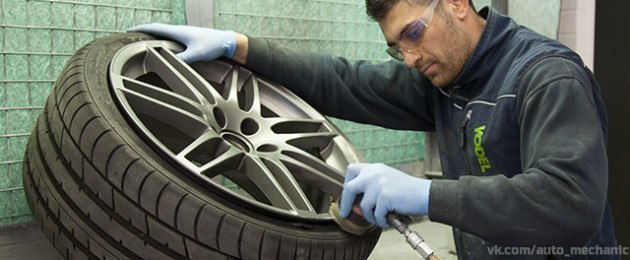 This is done from the inside of the tire. The cap of the fungus is rolled, and the excess legs are simply cut off from the outside.
This is done from the inside of the tire. The cap of the fungus is rolled, and the excess legs are simply cut off from the outside.
Puncture repair with sealant
With the advent of tubeless wheels, and later run flat tires, many automakers began to abandon spare wheels. Instead, repair kits with compressors are supplied with the machines. A repair kit is essentially a bottle of pressurized sealant. Later, such spray cans began to appear on the shelves of ordinary car dealerships.
This method has not taken root in the CIS, because the condition of the roads makes it necessary to have at least a stowaway in the kit, but it can also be considered as a method of repair on the road.
The car must be jacked up and sealant must be pumped into the damaged wheel through the nipple. Next, you should spin the wheel, then pump it up, lower the car and drive a few hundred meters. If the tire tightness has not been restored, repeat the procedure.
If the tire tightness has not been restored, repeat the procedure.
For commercial vehicles, cutting the tread with a special device (regrower) is a common thing. Moreover, such tire retreading is provided by the factory (marked REGROOVABLE on the sidewall) to increase the service life. But there are entrepreneurs who undertake to deepen the grooves in tires for passenger cars. But they are not intended for such an operation. Often used tires for sale are “refreshed” in this way. Be careful!
What is the threat?
The worst option is that the retreaded tire will shoot out on the road, as the master can damage the undertread layer when deepening the grooves. Such a tire will not be able to hold pressure at some point. There will be a boom! At best, the tire will indeed last a little longer, but is the game worth the candle? We think it's not worth it.
How is cutting made?
A regrower is used to cut the tread.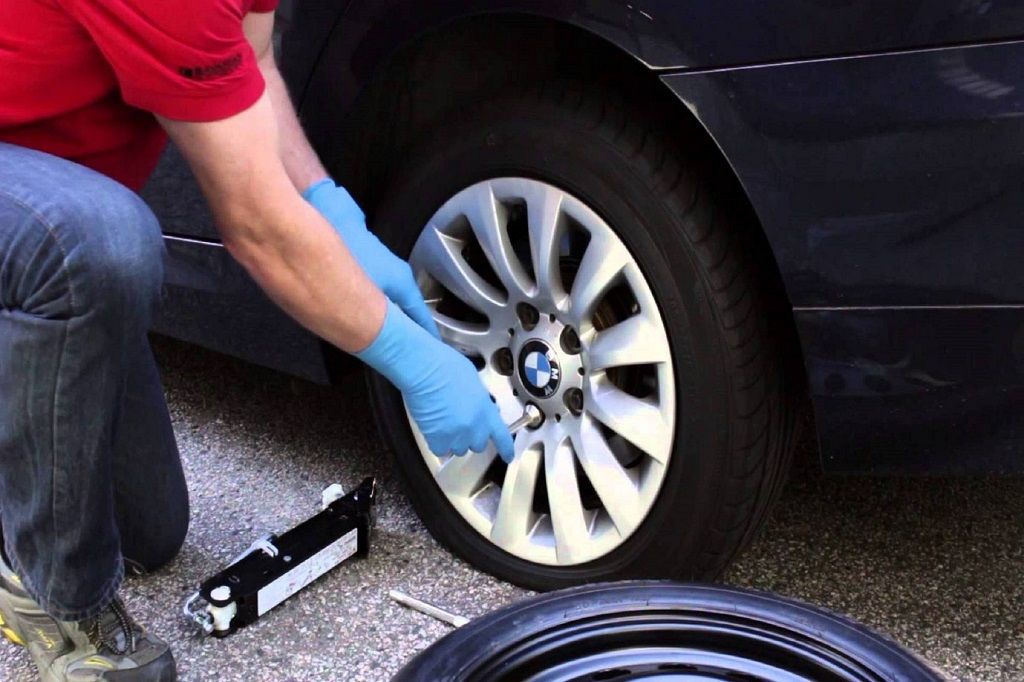 Roughly speaking, this is a large soldering iron with interchangeable tips of various shapes. It goes through rubber like a knife through butter.
Roughly speaking, this is a large soldering iron with interchangeable tips of various shapes. It goes through rubber like a knife through butter.
If the tire is for passenger cars, then it is worth taking on a regrower only in one case - when part of the tread pattern was welded with "new" rubber during repair. This is where threading comes in handy in order to restore the grooves and symmetry of the tread.
Vehicle operation is prohibited if:
- tires have a residual tread height of less than 1.6 mm;
- tires have punctures, cuts, ruptures that expose the cord, as well as delamination of the carcass, delamination of the tread and sidewall;
- tires in size or load capacity do not match the car model;
- tires of various sizes, designs (radial, diagonal, chamber, tubeless), models, with different tread patterns, winter and summer, studded and non-studded, new and restored, are installed on one axle of the car;
— Tires retreaded according to the second repair class are installed on the front axle.